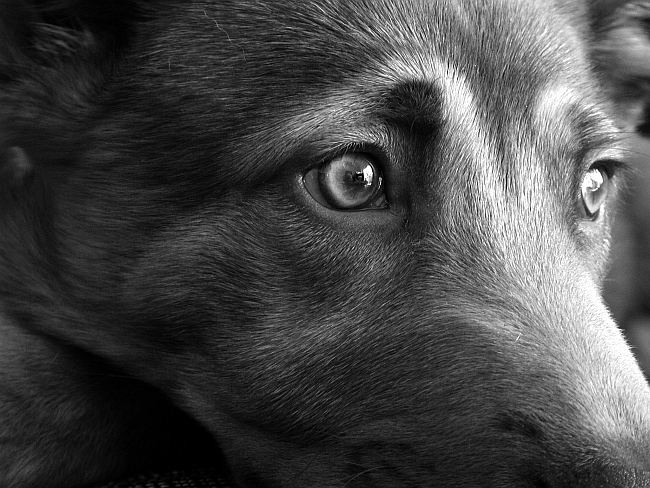Many of us have heard that dogs are colorblind or that they can only see in black and white. It is difficult to identify which claims are true and which are ungrounded, since no human has ever seen through the eyes of a canine, and one cannot simply ask Fido what shade of blue his chew toy is. Our understanding of visual abilities in the animal kingdom can only be attained through tests and scientific observation. Here is the basic breakdown of a dog’s vision:
- They do not see in only grey/black/white. Dogs can see colors, but not as many as we can. They can see blue shades, yellows, and grays the best.
- Dogs are green-blind and red-blind, which is also called deuteraniopia.
- When they see green, yellow, and orange, to a dog these shades appear as yellowish/gold. Similarly, anything on the red scale is gray/dark brownish.
How does colorblindness work?
According to animal vision authority, Dr. Stanley Coren, there are several reasons why dogs see differently than we do. Eyes are constructed with color detecting cells called “cones” and light/shape detecting cells called “rods” which help us to distinguish between objects. The rods identify for us how vibrant or dim a shape is, while the cones determine the color of the shape. Dogs only have two kinds of cones, while most people have three. Color vision scientist, Jay Neitz found that dog vision is closely related to people who struggle to identify reds/greens; so they concluded that the green/red detecting cone is the one dogs are missing.
On the other hand…
Canine vision is equipped in ways human vision is not. Though dogs are lacking certain color differentiation cones, they actually possess more rods in their eyes than humans. This means that shapes and distances seem more vivid to them, allowing them to detect motion better, as well as the ability to see well in dim or hazy lighting. Dogs also have a reflective membrane called the tapetum located behind the retina. This helps give canines better perception of their surroundings, enabling them see more clearly than we do in the dark. No wonder we like to enlist dogs on special operations, or reconnaissance missions. Next time your pup growls at a distant dark corner –trust that he might see something you don’t!
Note to self
Be patient with your pet if he sometimes doesn’t respond as quickly when color is involved. Though he will be able to detect the motion of something moving, he may not have as easy a time spotting his green stick lying still in the grass, and his red ball might blend in on the asphalt or wood-chipped play ground. Remember he is the one you want by your side when walking down dark streets at night!

